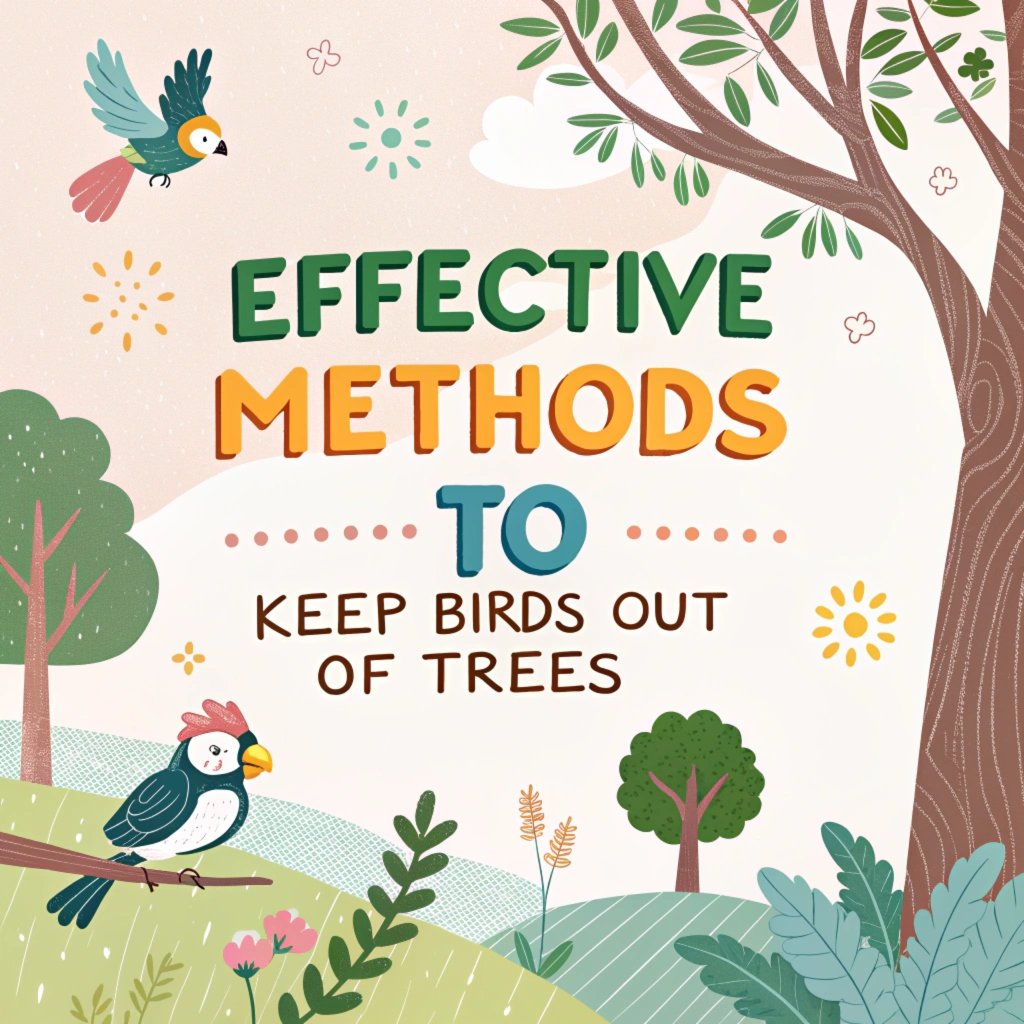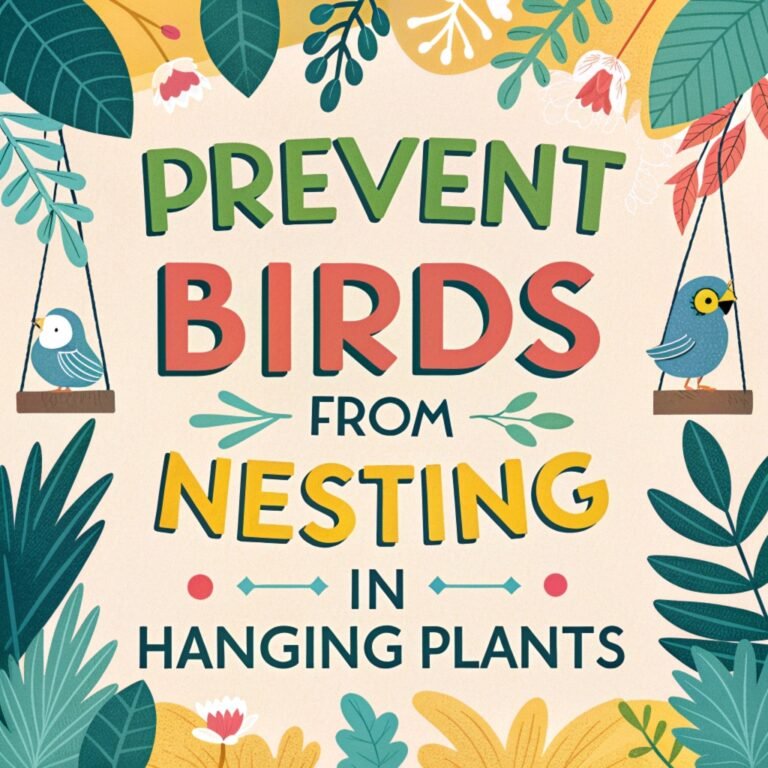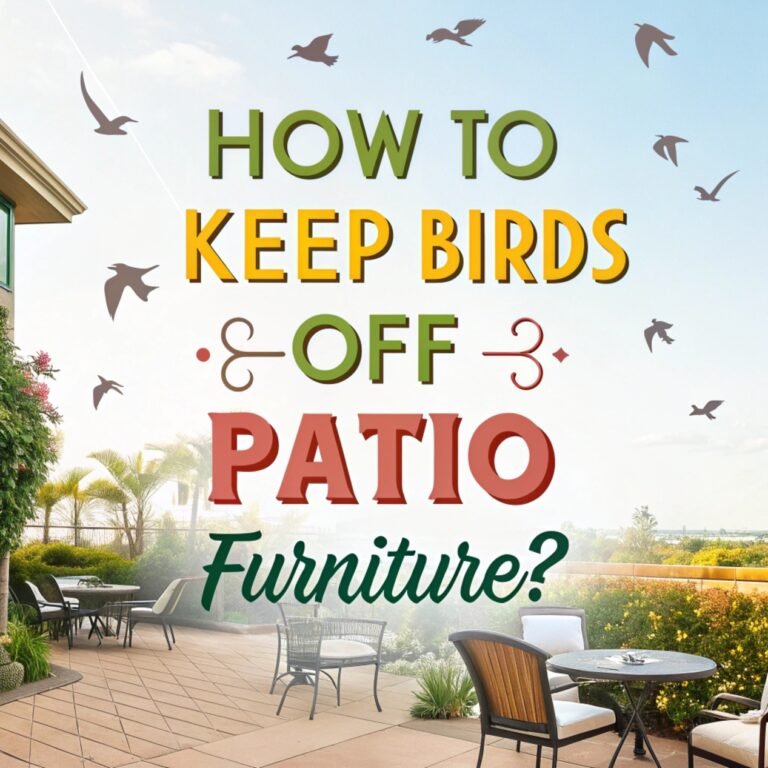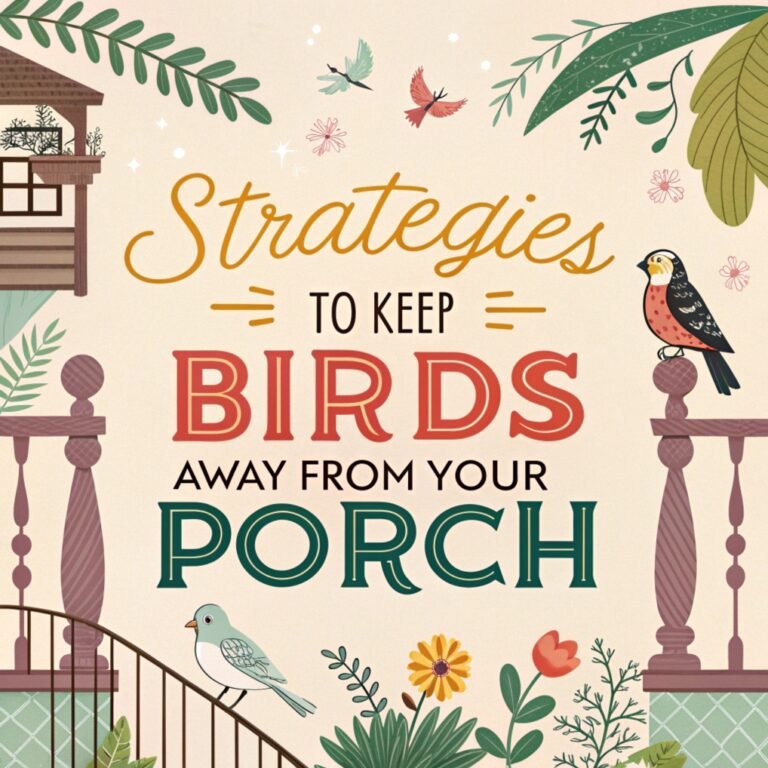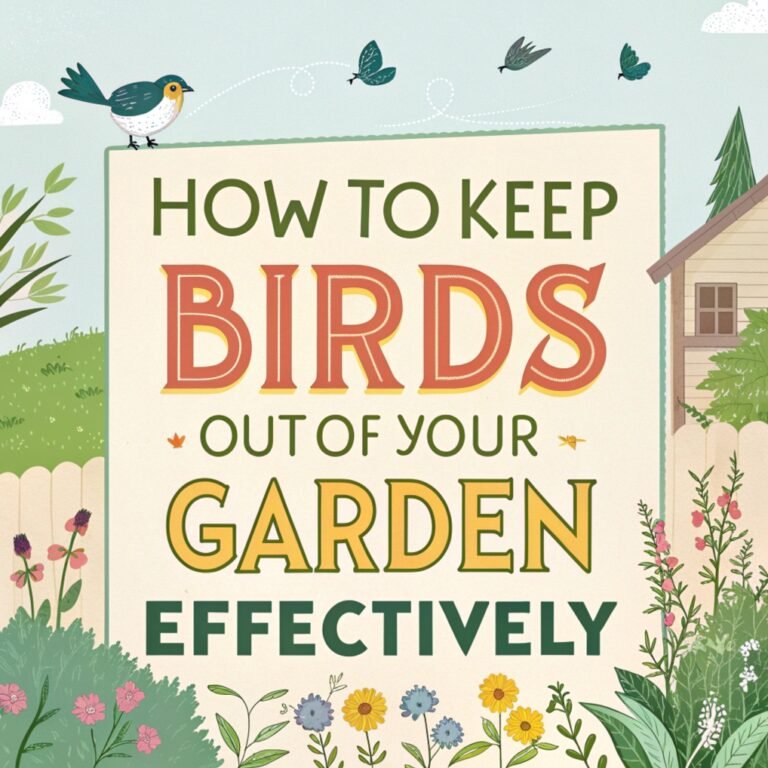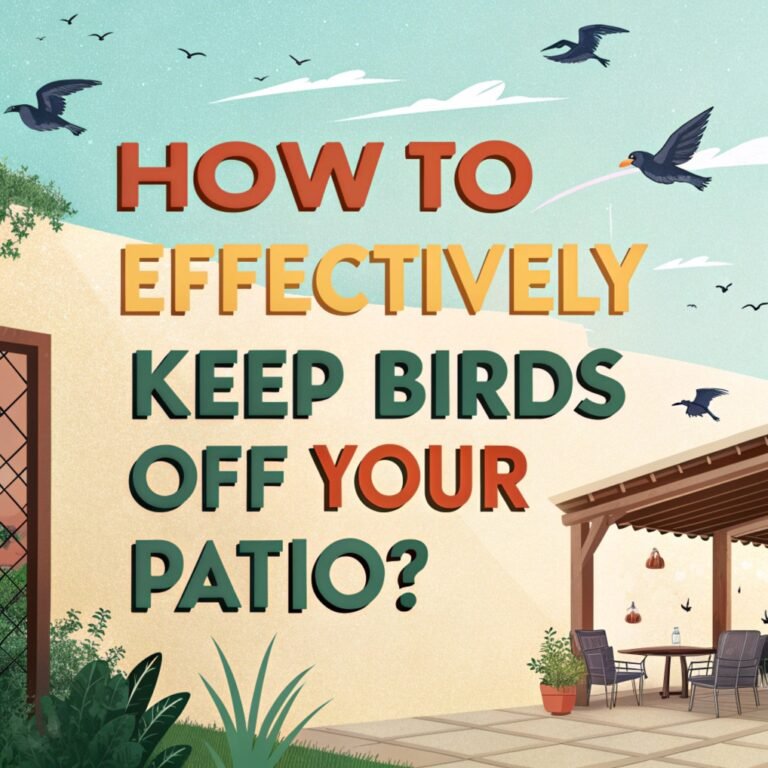Effective Methods to Keep Birds Out of Trees: Protecting Your Garden and Fruit Trees
Birds can be a delightful addition to any garden, but when they start causing damage to trees and fruit crops, it’s time to take action.
There are numerous humane and effective methods to keep birds out of trees without harming them.
This comprehensive guide will explore various techniques, from physical barriers to deterrents, that can help protect your trees and maintain a harmonious garden environment.
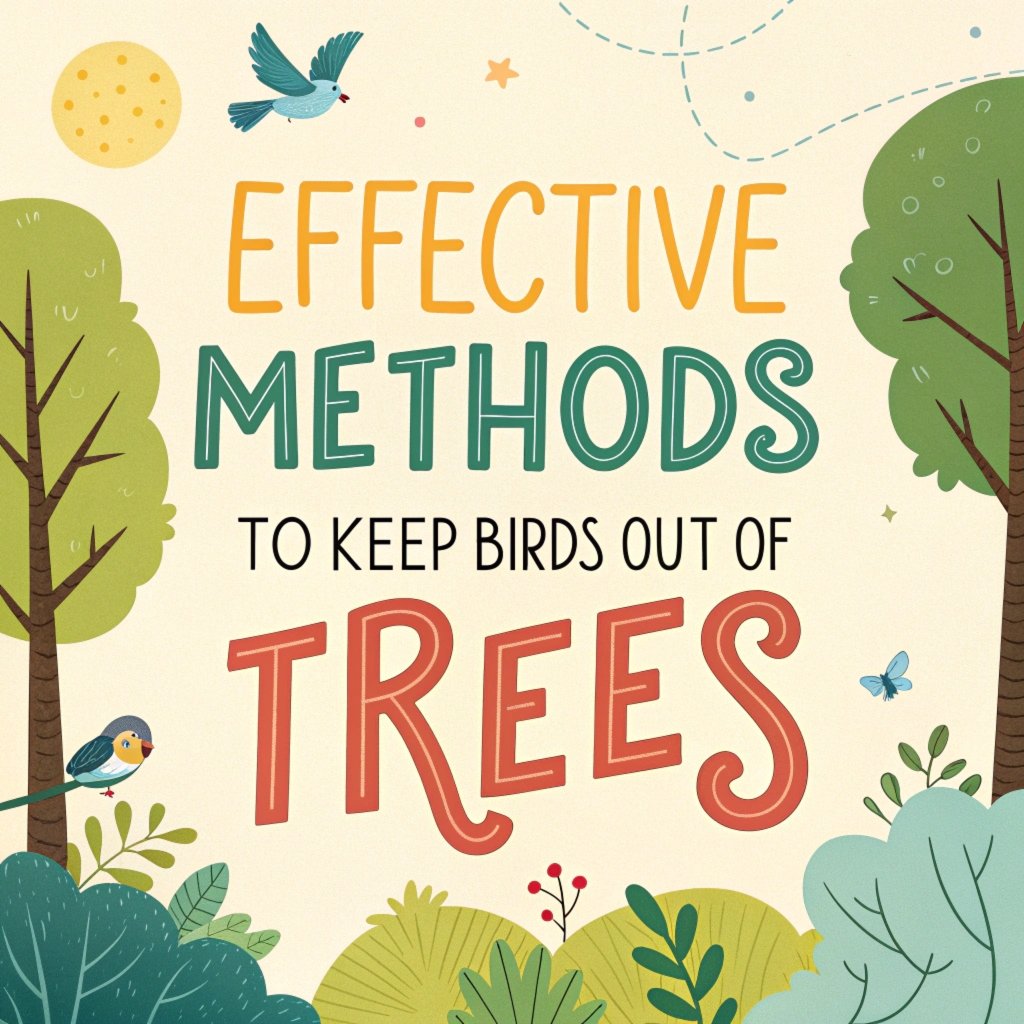
Key Takeaways:
- Bird netting is the most effective physical barrier for keeping birds out of trees
- Visual deterrents like reflective tape and scare devices can be highly effective
- Sound deterrents using bird distress calls can cover large areas
- Repellents containing Methyl Anthranilate can discourage birds from trees
- Habitat modification by removing food sources and nesting areas helps deter birds
- Combination of methods is often most effective for long-term bird control
- Regular adjustment of deterrents prevents birds from becoming accustomed to them
- Humane approaches should always be prioritized over harmful methods
- Alternative food sources away from trees can divert birds‘ attention
- Proper timing of deterrent application is crucial for maximum effectiveness
Understanding the Bird Problem in Trees
Birds are attracted to trees for various reasons, including shelter, nesting sites, and food sources.
Fruit-bearing trees are particularly vulnerable to bird damage, as the ripe fruit provides an irresistible feast for many bird species.
Understanding why birds are drawn to your trees is the first step in developing an effective control strategy.
Different bird species may pose different challenges, so it’s important to identify the specific types of birds causing problems in your trees.
Some birds may be after the fruit, while others might be using the trees for nesting or as a vantage point for hunting insects.
Recognizing the patterns of bird behavior in your trees can help you tailor your deterrent methods more effectively.
Observe when birds are most active and which parts of the trees they frequent to inform your control strategy.
Physical Barriers: Netting as the Most Effective Method
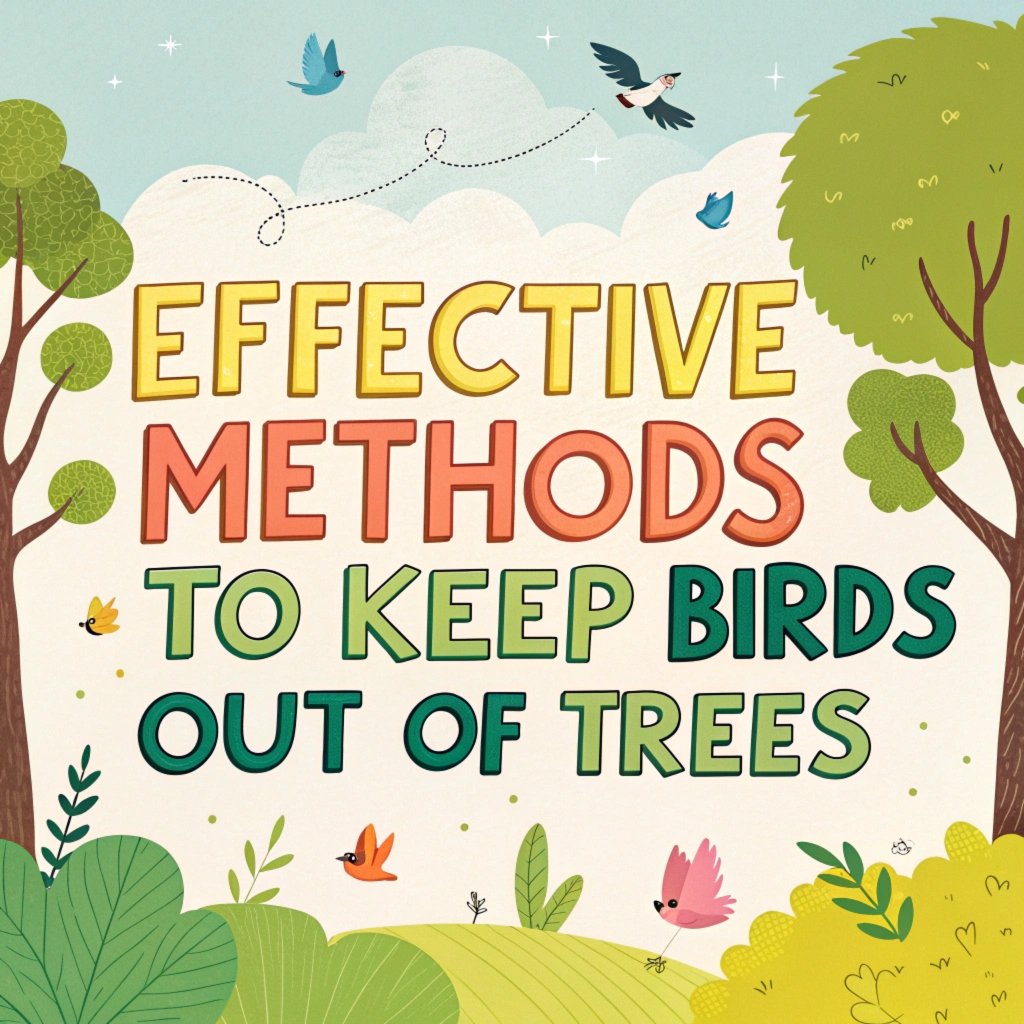
Among the various methods to keep birds out of trees, bird netting stands out as the most effective physical barrier.
Netting provides a direct obstacle that prevents birds from accessing the trees, making it particularly useful for protecting fruit-bearing trees.
When using netting, it’s crucial to choose the right mesh size. A 3/4-inch mesh is generally effective against most bird species.
The netting should be UV-stabilized and made from durable materials to withstand outdoor conditions.
To install netting, carefully drape it over the entire tree, ensuring there are no gaps where birds can enter. Secure the netting at the base of the tree to prevent birds from finding their way underneath.
While netting is highly effective, it can be challenging to manage for larger trees. It’s best suited for smaller fruit trees or sections of larger trees that need protection.
Visual Deterrents: Shiny and Moving Objects
Visual deterrents exploit birds’ natural wariness of unfamiliar or threatening objects. These methods are often inexpensive and easy to implement, making them popular choices for gardeners and orchard owners.
Reflective tape is a common and effective visual deterrent. The tape’s shiny surface reflects light and creates movement in the wind, which can startle and confuse birds.
Cut the tape into 2-3 foot strips and tie them to branches throughout the tree.
Another option is to use predator-eye balloons or scare devices that mimic the appearance of predatory birds. These can be hung in trees and will move with the wind, creating a threatening presence for pest birds.
CD’s or old pie plates can also serve as effective reflective deterrents. Hang these shiny objects from branches, spacing them out to cover different areas of the tree.
Sound Deterrents: Utilizing Bird Distress Calls
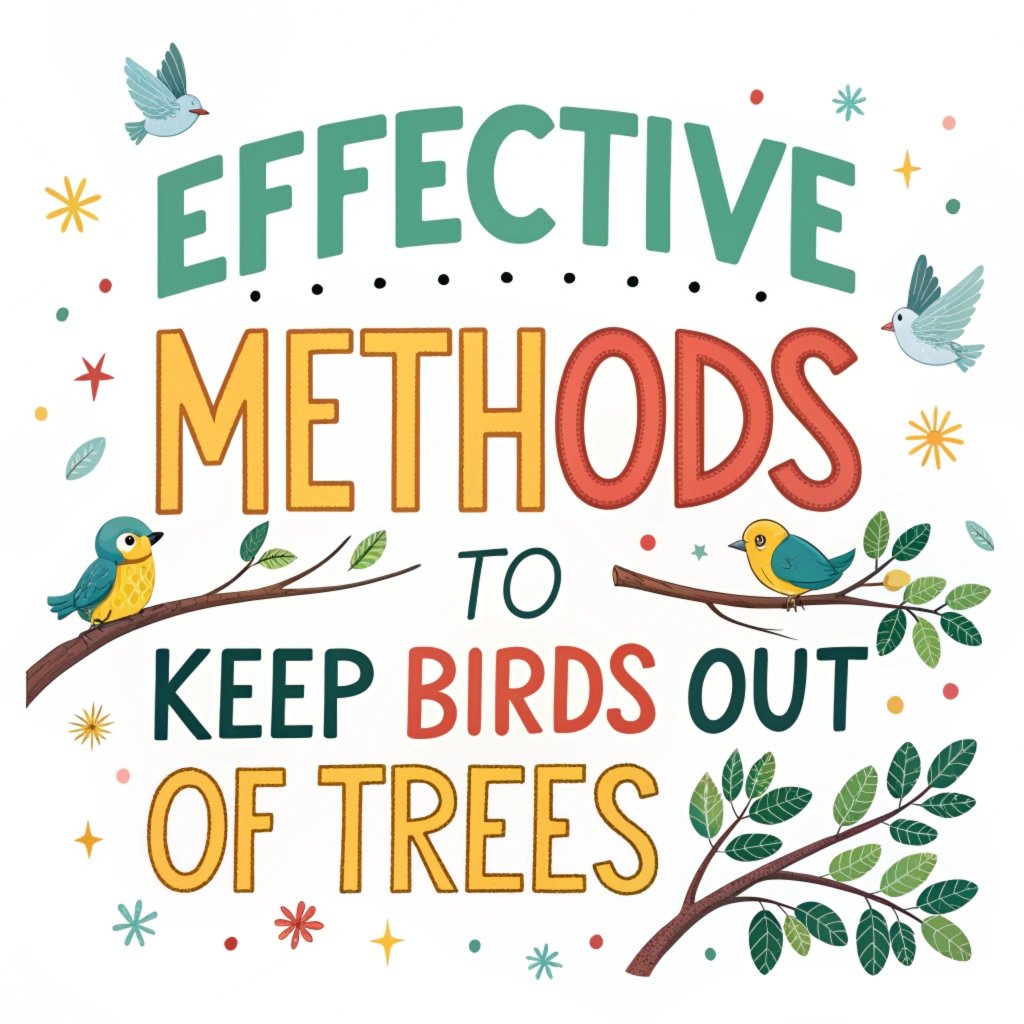
Sound deterrents offer a way to protect larger areas from bird intrusion. These devices use recorded bird distress calls or predator sounds to create an environment that birds perceive as unsafe.
Electronic bird repellers, such as the Bird Chase Super Sonic, can cover up to an acre of land. These devices play a variety of bird distress calls, making them effective against multiple bird species.
When using sound deterrents, it’s important to vary the sounds and timing to prevent birds from becoming accustomed to them. Many devices offer programmable options to help maintain their effectiveness over time.
While sound deterrents can be highly effective, it’s important to consider their impact on neighbors and other wildlife. Use them judiciously and in compliance with local noise regulations.
Bird Repellents: Chemical Solutions for Tree Protection
Bird repellents offer a chemical approach to deterring birds from trees. These products typically use Methyl Anthranilate (MA), a grape seed extract that birds find unpleasant.
Avian Block Repellent Pouches are an easy-to-use option. These pouches contain MA and can be hung directly in trees. One pouch typically covers a 10′ x 10′ x 10′ area and needs to be replaced every three months.
Liquid repellents like Avian Control can be sprayed or fogged onto trees. These treatments can last up to two weeks and are suitable for various types of birds and environments.
When using chemical repellents, always follow the manufacturer’s instructions carefully. Ensure that the product is safe for use on edible fruits if you’re treating fruit-bearing trees.
Habitat Modification: Reducing Attractants
Modifying the habitat around your trees can make them less appealing to birds. This approach focuses on removing or reducing factors that attract birds to the area.
Start by removing any bird feeders or bird baths near the trees you want to protect. While these can be lovely additions to a garden, they may be drawing more birds to your trees.
Trim back large shrubs and trees near the protected area to reduce potential nesting and roosting sites. This can make the environment less hospitable for birds looking to settle in the area.
Ensure that there are no visible food sources around the trees. Clean up fallen fruit promptly and consider using fruit bags to protect individual fruits on the tree.
Combination Strategies: Maximizing Effectiveness
For the best results in keeping birds out of trees, consider using a combination of different methods. This multi-pronged approach can be more effective than relying on a single strategy.
For example, you might use netting on smaller fruit trees, while employing visual deterrents and sound devices for larger trees or open areas.
Supplement these with habitat modifications and selective use of repellents for comprehensive protection.
Remember to rotate and vary your deterrent methods regularly. This prevents birds from becoming accustomed to any one method and maintains the effectiveness of your overall strategy.
Timing and Persistence: Key Factors in Bird Control
The timing of your bird control efforts can significantly impact their effectiveness. Start implementing your chosen methods before the birds establish a pattern of visiting your trees.
For fruit trees, begin your deterrent efforts as soon as the fruit starts to form. This can help prevent birds from identifying your trees as a food source in the first place.
Persistence is crucial in bird control. Birds can be persistent, so your efforts need to be consistent. Regularly check and maintain your deterrents, adjusting them as needed to ensure ongoing effectiveness.
Natural Predators: Encouraging Beneficial Wildlife
While the goal is to keep pest birds away from your trees, encouraging natural predators can be an effective long-term strategy. Birds of prey, such as hawks and owls, can help keep smaller bird populations in check.
Consider installing raptor perches or nesting boxes for owls in your garden. These can attract beneficial predators that will naturally deter pest birds from the area.
However, be aware that this method requires a delicate balance. You’ll need to ensure that your desired trees and crops are still protected from the predators you’re attracting.
Alternative Food Sources: Diverting Birds’ Attention
Sometimes, the best way to protect your trees is to offer birds an alternative food source. This can help divert their attention away from the trees you want to protect.
Set up bird feeders or plant bird-friendly plants in an area of your garden far from the protected trees. This gives birds an easy food source that doesn’t involve your fruit trees or other valuable plants.
Choose foods that are attractive to the bird species you’re dealing with. Sunflower seeds, fruit pieces, or specialized bird feed can be effective options.
Maintenance and Monitoring: Ensuring Long-term Success
Successful bird control requires ongoing maintenance and monitoring of your chosen methods. Regularly inspect your deterrents to ensure they’re functioning properly and haven’t been damaged.
Keep an eye on bird activity around your trees. If you notice changes in behavior or new species appearing, be prepared to adjust your strategy accordingly.
Document your efforts and their results. This can help you refine your approach over time and identify which methods work best in your specific situation.
FAQs
How effective is bird netting in protecting fruit trees?
Bird netting is highly effective when properly installed. It provides a physical barrier that prevents birds from accessing the fruit. However, it’s important to choose the right mesh size and ensure the netting is securely fastened to prevent birds from finding ways underneath.
Can reflective tape really keep birds away from trees?
Yes, reflective tape can be an effective deterrent. The moving, shiny surface confuses and startles birds, making them less likely to land in the tree. For best results, use long strips of tape and ensure they can move freely in the wind.
Are sound deterrents harmful to birds or other animals?
Most commercial sound deterrents are designed to be safe for birds and other animals. They work by creating an uncomfortable environment rather than causing harm. However, it’s important to use them responsibly and consider their impact on local wildlife and your neighbors.
How often should I change or move my bird deterrents?
It’s recommended to adjust your deterrents every 1-2 weeks. Birds can become accustomed to static deterrents over time, so changing their position or alternating between different methods can help maintain their effectiveness.
Is it safe to use chemical bird repellents on fruit trees?
Many bird repellents are safe for use on fruit trees, but it’s crucial to check the product label and follow instructions carefully. Look for repellents specifically designed for use on edible crops and always wash fruit thoroughly before consumption.
Can providing alternative food sources really keep birds away from my trees?
Offering alternative food sources can be effective, especially when combined with other deterrent methods. By providing an easy food source away from your protected trees, you can reduce the birds’ motivation to target your trees.
How do I protect very tall trees from birds?
For tall trees, a combination of methods is often most effective. Consider using sound deterrents for broad coverage, supplemented with visual deterrents like reflective tape or scare devices in the higher branches. Habitat modification around the base of the tree can also help.
Are there any plants that naturally repel birds?
While no plants completely repel birds, some are less attractive to them. Plants with strong scents or prickly foliage, like lavender or holly, may be less appealing. However, relying solely on plants for bird control is not usually effective.
How can I protect my trees from birds without harming beneficial insects?
Focus on methods that target birds specifically, such as visual and sound deterrents. Avoid broad-spectrum insecticides or sticky substances that could harm beneficial insects. Netting with appropriate mesh size can keep out birds while allowing smaller beneficial insects to pass through.
What should I do if birds are nesting in my trees?
If birds have already established nests, it’s often best (and in many cases, legally required) to wait until the nesting season is over before implementing deterrent methods. Once the nests are naturally vacated, you can remove them and start your bird control efforts to prevent future nesting.

Hello, I’m Amelia White, the founder of birdsfanatic.com. As a lifelong bird enthusiast and spiritual seeker, I’ve always been fascinated by the mystical connections between birds and the human experience. On this site, I share my knowledge and insights into the symbolic meanings and spiritual significance of various bird species, exploring their roles in mythology, folklore, and cultural traditions. Join me on this journey into the world of birds, where we’ll discover the hidden wisdom and guidance that these magnificent creatures have to offer.

